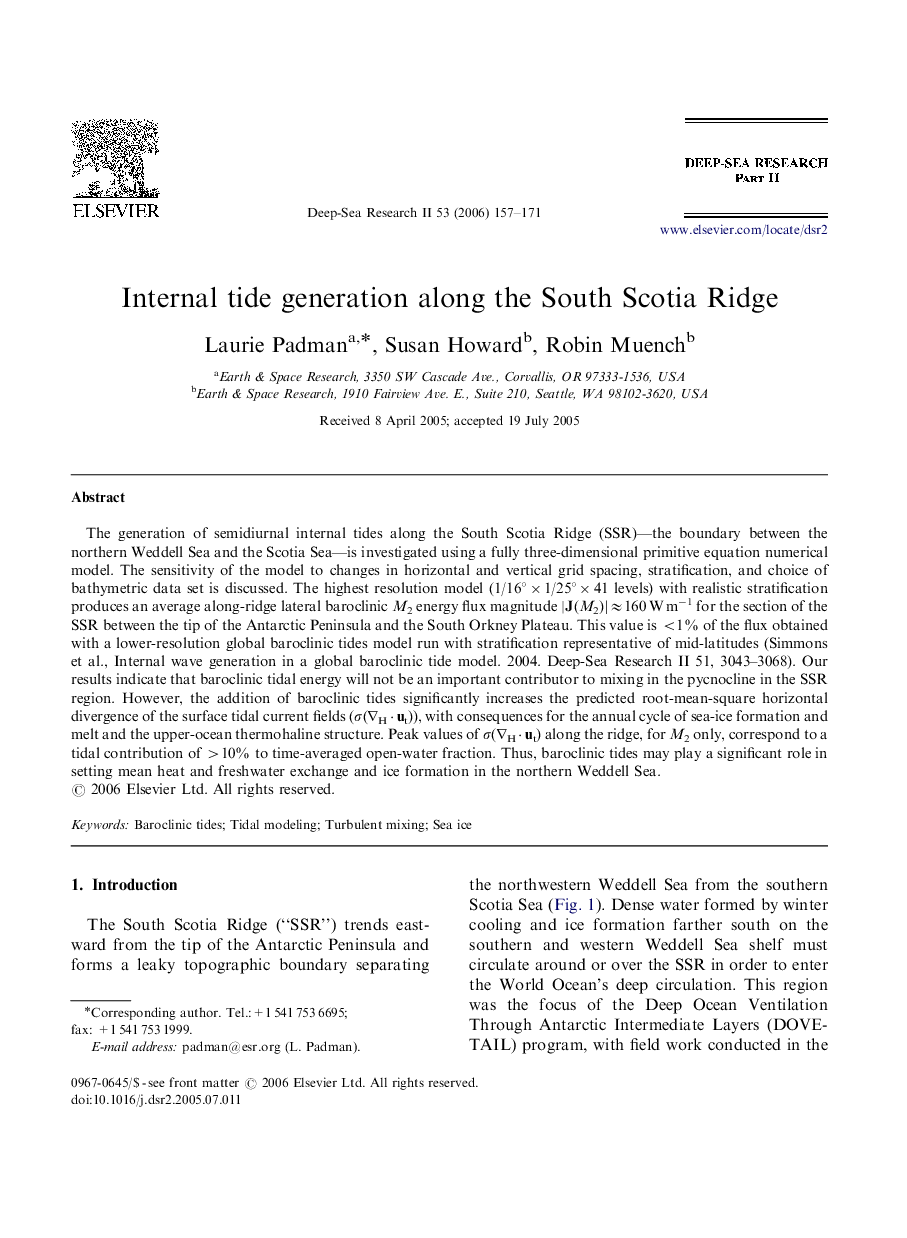| Article ID | Journal | Published Year | Pages | File Type |
|---|---|---|---|---|
| 4537470 | Deep Sea Research Part II: Topical Studies in Oceanography | 2006 | 15 Pages |
The generation of semidiurnal internal tides along the South Scotia Ridge (SSR)—the boundary between the northern Weddell Sea and the Scotia Sea—is investigated using a fully three-dimensional primitive equation numerical model. The sensitivity of the model to changes in horizontal and vertical grid spacing, stratification, and choice of bathymetric data set is discussed. The highest resolution model (1/16°×1/25°×41 levels) with realistic stratification produces an average along-ridge lateral baroclinic M2 energy flux magnitude |J(M2)|≈160 W m−1 for the section of the SSR between the tip of the Antarctic Peninsula and the South Orkney Plateau. This value is <1% of the flux obtained with a lower-resolution global baroclinic tides model run with stratification representative of mid-latitudes (Simmons et al., Internal wave generation in a global baroclinic tide model. 2004. Deep-Sea Research II 51, 3043–3068). Our results indicate that baroclinic tidal energy will not be an important contributor to mixing in the pycnocline in the SSR region. However, the addition of baroclinic tides significantly increases the predicted root-mean-square horizontal divergence of the surface tidal current fields (σ(∇H·ut)), with consequences for the annual cycle of sea-ice formation and melt and the upper-ocean thermohaline structure. Peak values of σ(∇H·ut) along the ridge, for M2 only, correspond to a tidal contribution of >10% to time-averaged open-water fraction. Thus, baroclinic tides may play a significant role in setting mean heat and freshwater exchange and ice formation in the northern Weddell Sea.
